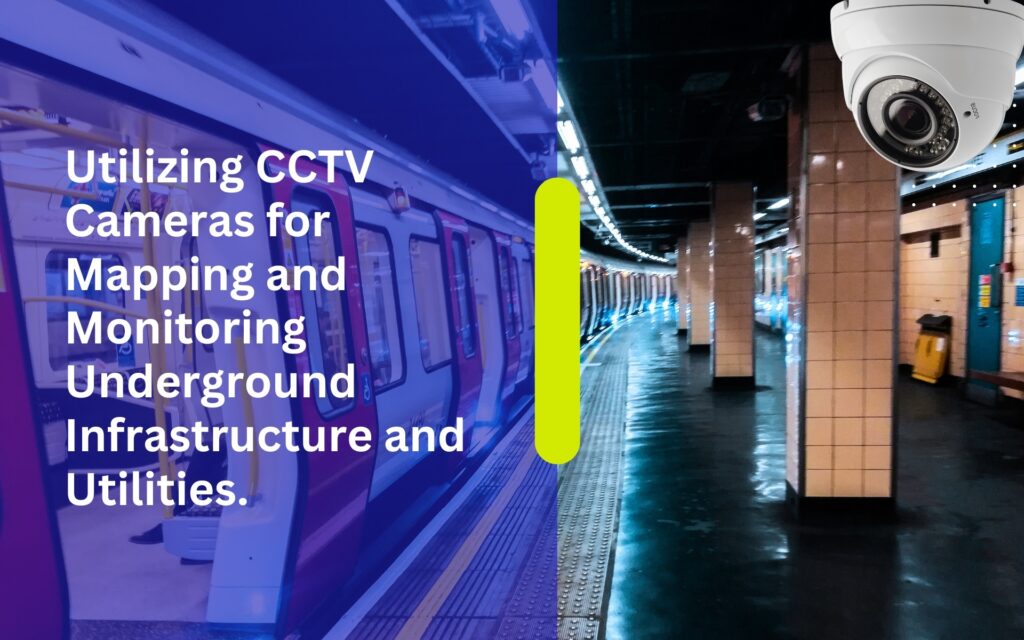InstallersPH IT Solutions 2026 AVP: A Brighter Tomorrow Built on Nine Years of Innovation and Dedication. Introduction. As InstallersPH IT Solutions proudly celebrates its ninth year of service in 2026, the company …
Utilizing CCTV Cameras for Mapping and Monitoring Underground Infrastructure and Utilities.

Introduction
In the vast web of urban infrastructure, what lies beneath our feet often goes unnoticed but plays a critical role in sustaining our daily lives. From water and sewage systems to electrical and telecommunication networks, the underground infrastructure forms the backbone of modern societies. However, managing and maintaining these intricate networks pose significant challenges, chief among them being the inability to visually inspect and monitor underground assets efficiently.
Enter Closed-Circuit Television (CCTV) cameras, a technological marvel that has transformed the way we map and monitor underground infrastructure and utilities. In this comprehensive guide, we delve into the intricacies of utilizing CCTV cameras for subterranean exploration, highlighting their benefits, applications, and future prospects.
Unveiling the Underground Realm: The Need for CCTV Surveillance
Beneath the bustling streets and sidewalks lies a labyrinth of pipelines, cables, and conduits that facilitate the flow of essential services. While these underground networks are designed to withstand the test of time, they are not immune to wear, tear, and unforeseen damages. Factors such as corrosion, ground movement, and natural disasters can compromise the integrity of these assets, leading to service disruptions, environmental hazards, and economic losses.
Traditionally, inspecting and monitoring underground infrastructure involved costly and time-consuming methods such as manual excavation or deploying specialized equipment like Ground Penetrating Radar (GPR). However, these approaches often yielded limited insights and posed risks to workers and surrounding structures.
The Rise of CCTV Technology in Subsurface Surveillance
The advent of CCTV technology has revolutionized the field of underground asset management by offering a non-invasive, cost-effective, and highly accurate means of inspection and monitoring. Unlike traditional methods, CCTV cameras can access confined spaces, navigate complex pipe networks, and provide real-time visual feedback, enabling engineers and utility operators to make informed decisions swiftly.
Key Features and Capabilities of CCTV Cameras for Subsurface Exploration
1. Compact Design
Modern CCTV cameras are compact and lightweight, allowing them to navigate through narrow pipelines and conduits with ease.
2. High-Resolution Imaging
Advanced cameras are equipped with high-definition (HD) sensors and lenses, ensuring crystal-clear imagery even in low-light conditions.
3. Pan-and-Tilt Functionality
Some CCTV systems feature pan-and-tilt capabilities, enabling operators to adjust the viewing angle remotely for comprehensive inspection.
4. Robust Construction
Built to withstand harsh environments, CCTV cameras are designed to resist water, dust, and mechanical shocks, ensuring reliable performance in challenging conditions.
5. Integrated Lighting
LED lights integrated into the camera housing illuminate the inspection area, enhancing visibility and capturing detailed images of the asset’s condition.
6. Wireless Connectivity
Many CCTV systems offer wireless connectivity options, allowing operators to stream live footage to portable devices for real-time analysis and decision-making.
Applications of CCTV Cameras in Underground Asset Management
The versatility of CCTV technology extends across various sectors, offering invaluable insights into the condition, performance, and integrity of underground infrastructure. Some of the key applications include:
1. Pipeline Inspection
CCTV cameras are widely used for inspecting sewer lines, stormwater drains, and gas pipelines to detect blockages, leaks, and structural defects.
2. Utility Mapping
By traversing underground conduits, CCTV cameras help create detailed maps and as-built drawings of utility networks, aiding in urban planning and infrastructure development.
3. Asset Management
Continuous monitoring with CCTV cameras enables asset owners to track the deterioration rate, prioritize maintenance activities, and extend the lifespan of critical infrastructure.
4. Emergency Response
During emergencies such as pipeline ruptures or underground fires, CCTV cameras provide real-time visibility to first responders, facilitating swift and targeted interventions.
5. Environmental Compliance
Regular inspection of underground assets ensures compliance with environmental regulations and minimizes the risk of pollution or contamination incidents.
Overcoming Challenges and Enhancing Efficiency
While CCTV technology offers numerous benefits for underground asset management, its effective deployment requires careful planning, expertise, and investment in specialized equipment. Some of the challenges associated with CCTV surveillance in subsurface environments include:
1. Access Limitations
Navigating through congested pipelines or accessing deep underground chambers may pose logistical challenges for camera deployment.
2. Image Interpretation
Analyzing vast amounts of video footage and identifying anomalies or defects requires trained personnel and advanced image processing algorithms.
3. Data Storage and Management
Managing the massive volume of data generated by CCTV inspections necessitates robust storage solutions and efficient data management protocols.
4. Maintenance and Calibration
Regular maintenance and calibration of CCTV systems are essential to ensure optimal performance and accuracy in data interpretation.
5. Regulatory Compliance
Adhering to industry standards and regulatory requirements is paramount to ensure the reliability and validity of inspection data obtained through CCTV surveillance.
Addressing these challenges requires collaboration between stakeholders, investment in training and technology, and a proactive approach to asset management. By leveraging the capabilities of CCTV cameras and embracing innovative solutions, we can unlock the full potential of underground infrastructure and pave the way for smarter, more resilient cities.
Future Directions and Emerging Trends
As technology continues to evolve, the future of underground asset management holds promise for further advancements in CCTV surveillance. Some emerging trends and developments to watch out for include:
1. Artificial Intelligence (AI) Integration
AI-powered image analysis algorithms can automate defect detection, streamline data interpretation, and enhance the efficiency of CCTV inspections.
2. Drone-based Inspection
Unmanned Aerial Vehicles (UAVs) equipped with CCTV cameras offer a versatile and cost-effective solution for inspecting large-scale underground networks and remote locations.
3. Augmented Reality (AR) Visualization
AR-enabled CCTV systems provide operators with augmented views of underground assets, overlaying digital information onto real-world images for enhanced situational awareness.
4. Predictive Maintenance
By leveraging data analytics and machine learning, CCTV surveillance can enable predictive maintenance strategies, allowing asset owners to anticipate failures and proactively address maintenance needs.
5. Integration with Geographic Information Systems (GIS)
Integrating CCTV data with GIS platforms enhances spatial analysis, asset tracking, and decision support for urban planners, engineers, and policymakers.
Conclusion
In conclusion, CCTV cameras have emerged as indispensable tools for mapping and monitoring underground infrastructure and utilities, offering unparalleled insights into the hidden world beneath our cities. By harnessing the power of CCTV technology, we can optimize asset management practices, mitigate risks, and ensure the resilience and sustainability of urban infrastructure for generations to come. As we continue to innovate and push the boundaries of technological advancement, the future of underground asset management looks brighter than ever before.
In the quest to unlock the subterranean realm, CCTV cameras serve as our guiding light, illuminating the path towards safer, smarter, and more resilient cities. With visionary leadership, collaboration, and a commitment to excellence, we can harness the full potential of CCTV surveillance and build a world where the underground is not just a mystery but a marvel of human ingenuity and innovation.
Related Articles
How to Properly Conduct CCTV Preventive Maintenance Service (PMS). Introduction. CCTV systems play a crucial role in maintaining safety and security within properties, businesses, and institutions. However, even the most advanced surveillance …
Celebrating the Birthday of our Sales Executive, Ms. Diornelyn Subico. Introduction. Today, we take a special moment to celebrate the birthday of our dedicated and well-loved Sales Executive, Ms. Diornelyn Subico. As …


